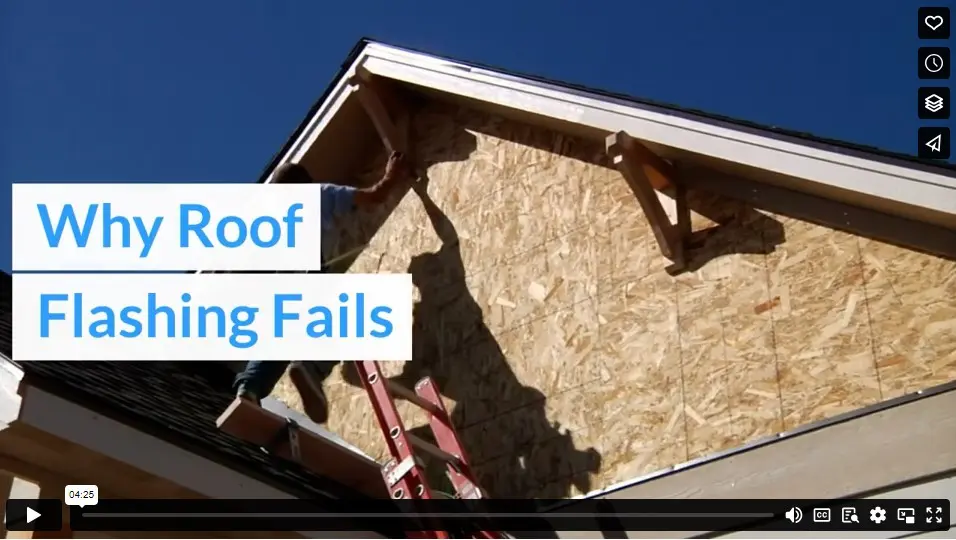It may be less conspicuous than shingles or gutters, but flashing is critical to your roofing system. Don’t like rain in your rumpus room or puddles in the pantry? Thank your roof flashing for preventing wandering water. It’s the superhero of your roof. Unfortunately, sometimes, our roof flashing fails. Like Superman faced with kryptonite or Aquaman in the desert, your roof flashing has weaknesses that can prevent it from doing its job. Let’s look at the reasons roof flashing fails.
Rust
Imagine your roof flashing your last line of defense against water incursion. Now, imagine that defensive structure covered in rust. It’s easy to see that it won’t be as effective as a moisture barrier. Over time, rain and moisture can turn your flashing into a rust bucket, preventing it from forming a proper seal against your roof, creating opportunities for water to seek under, around, or through it. Keep an eye out for that sneaky orange problem. If you notice rust on your roof flashing, call roofing contractors ASAP.
Wear and Tear
It may not be any single, dramatic incident or problem that leads to the downfall of your flashing. Sometimes, it’s just gradual, incremental damage from a life of battling the elements. Exposure to all the nastiness Mother Nature can dish out gets the best of your roof flashing and causes it to stop doing its job. Proper installation and maintenance will prolong your flashing’s life, but no matter what you do, it won’t last forever. Wear and tear will eventually cause roof flashing failure.
Shrinkage and Warping
When exposed to water and dramatic temperature changes, your roof flashing expands and contracts. These repeated changes of shape and size can lead to warping over time. Warped flashing no longer lays flush against the other roof materials and fails to create an effective barrier against moisture. The gaps created by warped or shrunk flashing may also allow insects and small creatures in. If your roof flashing looks wavy or warped, call a residential roofing company before you begin seeing water damage.
DIY Disasters
The day has come: your roof flashing needs to be replaced. It can be tempting to try the project on your own. After all, you are capable, creative, and able to watch relevant YouTube videos, so it should be fine, right?
Like many other roofing contractors in Utah, we’ve seen our share of DIY disasters. Roof flashing is too essential to the function of your roof and the protection of your home to leave it to amateurs. Call the professionals when it comes time to repair or replace your roof flashing. This project is something you can’t afford to get wrong. The money you save trying to do this work yourself may be a fraction of the expense of repairing the damage caused by flashing that doesn’t do its job because you improperly installed it.
Inexperienced Contactors
Roofing isn’t a job for most DIY-ers. But you must also be careful who you hire to perform your work. Poor workmanship can have catastrophic consequences for your roof. Improper installation can prevent your roof flashing from being effective against water. If not correctly and tightly secured, not only will the flashing allow water to seep under your roof’s protective layer, but the movement of loose flashing can damage nearby roof materials. As the flashing shifts and rubs against loose fasteners, it will also sustain damage.
Ensure the contractor you are working with has the experience to handle your project.
Debris
If a tree hangs over your roof, those branches threaten your roof’s flashing. When they scrape against your roofing materials, that’s bad news. Branches, twigs, and other debris can grind against the flashing, damaging it or pulling it away from the rest of the roof. It can leave holes where water can enter or gaps that moisture can seep under.
Debris can also hold moisture against the flashing pieces, accelerating the rate of rust and wear. Debris is a threat to the health and longevity of your roof flashing.
Disintegration
Most roof flashing is made of steel, copper, or aluminum. While all these materials are resistant to disintegration, nothing lasts forever. Your flashing will eventually succumb to disintegration if none of the other threats on our list get to it first. When replacing your roof or its flashing, ask your residential roofer which materials suit your local conditions.
Ineffective Sealing
Roof flashing without proper sealing is not effective. Incorrect, insufficient, or absent sealing can lead to water infiltration. Nails that secure the flashing need to have caps to prevent leaks. Your roofer should seal every edge of the flashing to create a water-tight barrier that prevents moisture from seeping under the flashing pieces. Otherwise, your flashing will fail to do its job of keeping water out.
Roof flashing can fail for reasons ranging from man-made mistakes to natural nastiness. Whatever the reason for the failure, quickly address any potential issues with your roof flashing to prevent further damage to your roof, home, and wallet.
Video

Infographic
Flashing is crucial for your roofing system, even though it’s not as obvious as shingles or gutters. It helps prevent water damage, but sometimes, flashing fails. Discover in this infographic the reasons for flashing failure.

